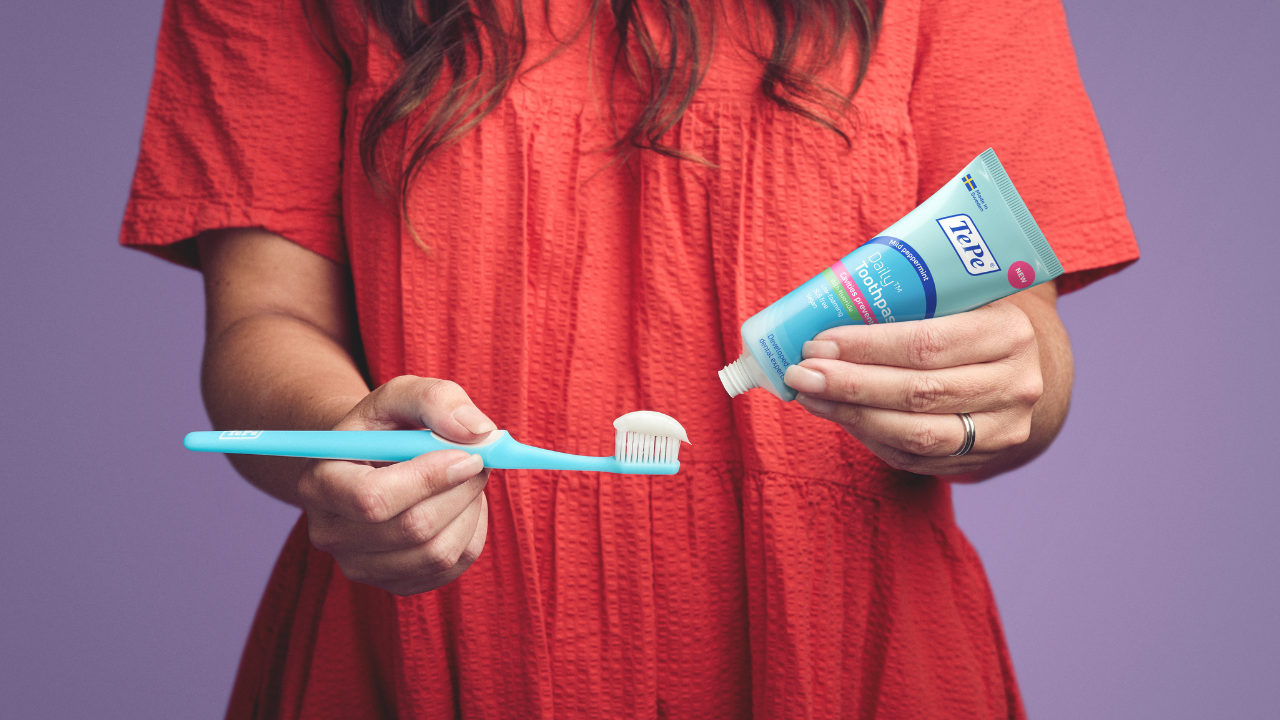- it's all about amount, time and water
Applying toothpaste, brushing your teeth, spitting and rinsing – it’s as easy as 1-2-3, right? Well, not really, since in each of these steps, the interproximal fluoride concentration* will be affected, depending on the amount of toothpaste, the brushing time, and the water used to rinse the mouth. This is the assumption in a randomised crossover study by Ishizuka et al. (2020). The results reinforce and highlight the importance of precise recommendations to patients about their toothbrushing behaviours.
“Our hypothesis was that different amounts of toothpaste, durations, amounts of water and different kinds of toothpaste affect the interproximal fluoride concentration after toothbrushing.” - Ishizuka et al.
How the study was conducted
To examine the effects of toothbrushing routines on interproximal fluoride (F) concentration, the study involved 16 healthy adults, divided into two test series:
- Series 1: different toothbrushing routines. Investigated the impact of different amounts of toothpaste (1 cm vs. 2 cm), brushing durations (1 min vs. 2 min), and water rinsing volumes (10 mL vs. 20 mL) on fluoride retention**.
- Series 2: different forms of toothpaste administration. Assessed the influence of different fluoride toothpaste formulations (paste, gel, and foam) with different post-brushing rinsing conditions (no rinsing vs. 10 mL water).
Participants followed specific brushing protocols using a manual toothbrush (TePe GOOD™ Regular Soft) and fluoride toothpaste (1,450 ppm F). Fluoride levels in interproximal saliva were measured with an ion-specific electrode, with samples taken before brushing and up to 60 minutes after.
What the study found out
The study demonstrated that fluoride retention in interproximal areas is significantly influenced by:
- Amount of toothpaste used: A simple increase from 1 cm to 2 cm led to a 47.2% rise in fluoride concentration.
- Brushing duration: By extending brushing time from 1 minute to 2 minutes, fluoride retention was substantially increased by 26.8%.
- Post-brushing rinsing: Reducing water rinsing from 20 mL to 10 mL enhanced fluoride concentration by an impressive 41.2%.
- Type of toothpaste: Paste and gel formulations yielded approximately 50% higher fluoride levels than foam-based products.
These findings emphasise why dental professionals should recommend brushing for 2 minutes with 2 cm toothpaste and, at the same time, limit the amount of water for rinsing. It also shows us why patient education is important in affecting brushing habits, especially when it comes to fluoride retention for caries prevention.

